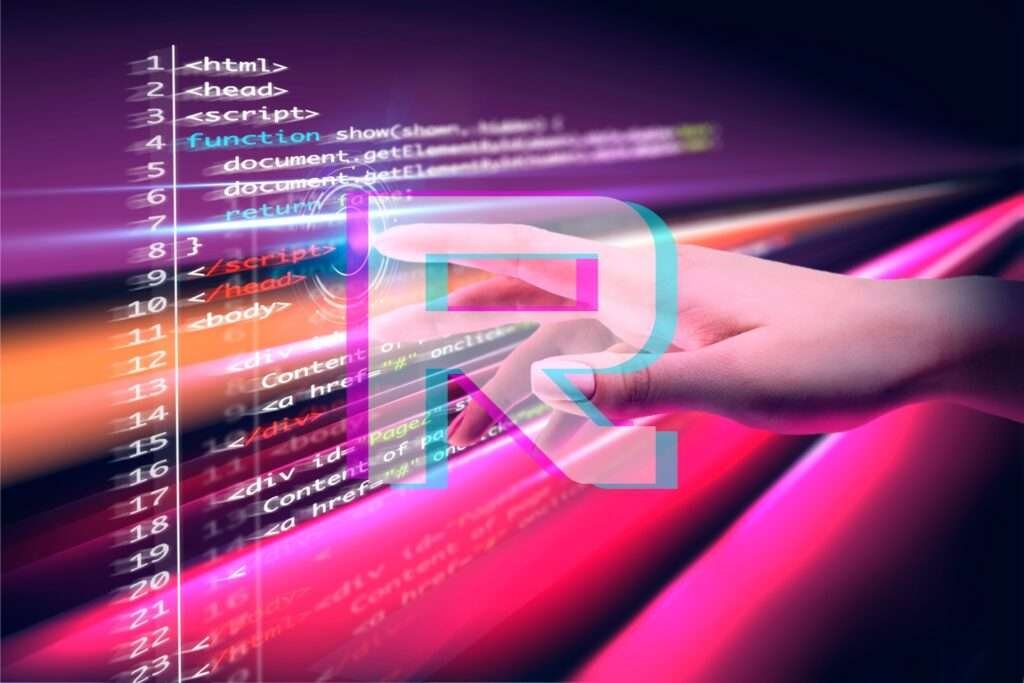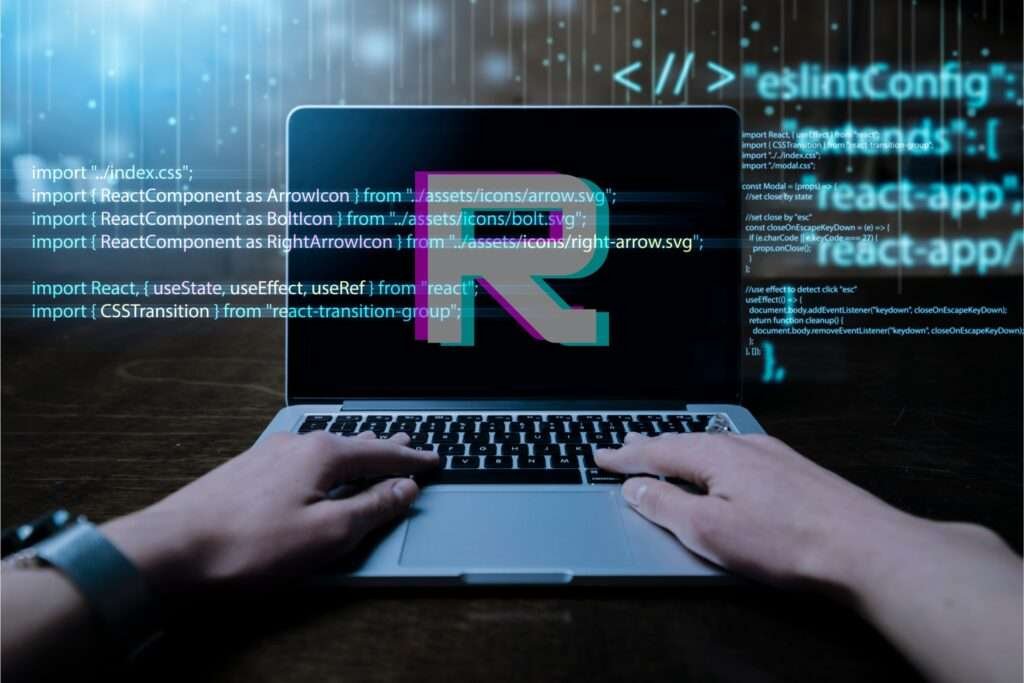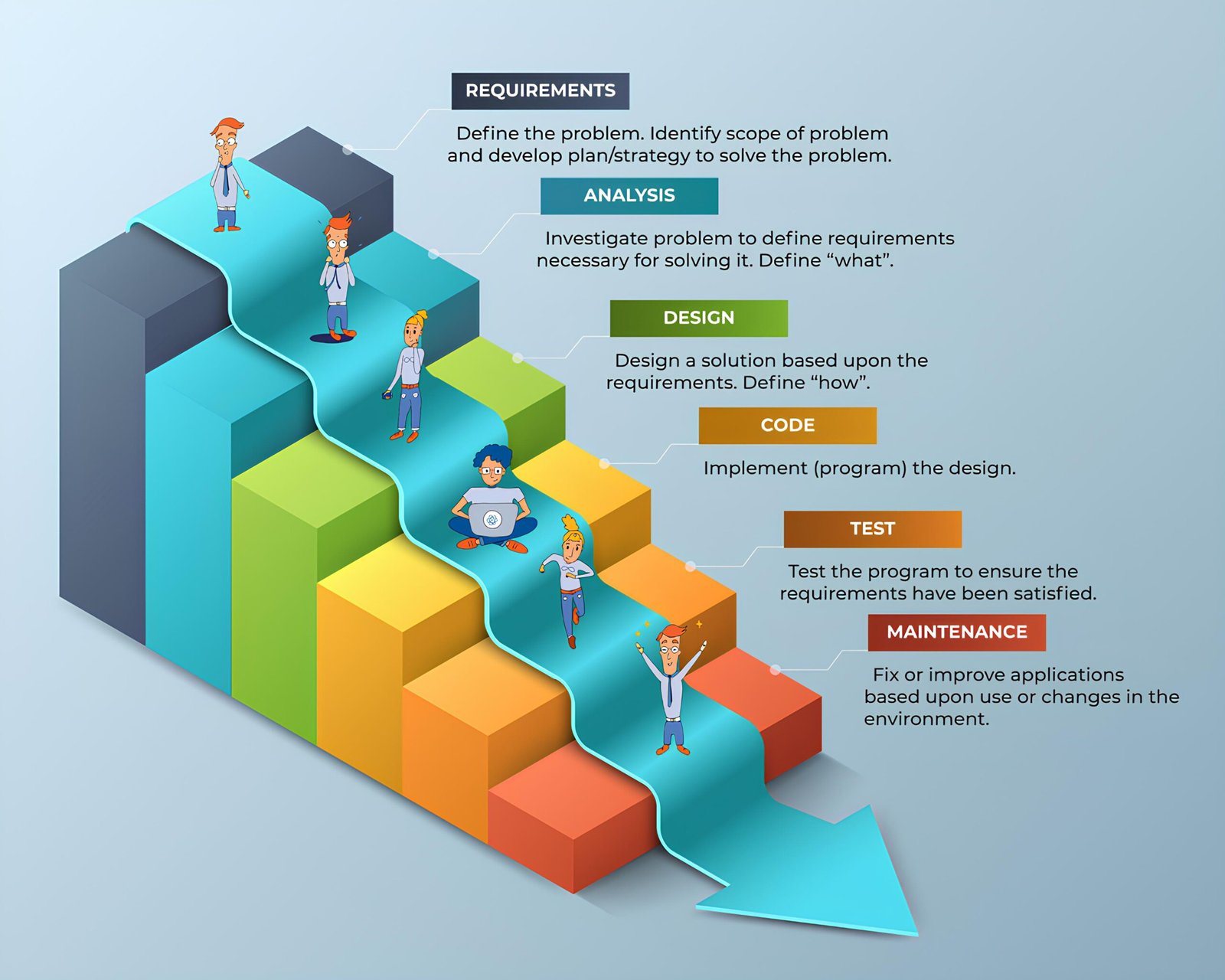Introduction to the R programming language
When it comes to data analysis and statistical computing, the R programming language is a powerful tool that has gained tremendous popularity in recent years.
Whether you are a data scientist, a researcher, or a business analyst, R Programming Language provides a wide range of capabilities to help you analyse, visualize, and model complex data sets. In this comprehensive guide, I will take you through the journey of understanding and harnessing the power of R.
History and evolution of R
Originating from the collaborative efforts of Ross Ihaka and Robert Gentleman at the University of Auckland, New Zealand, during the early 1990s, R programming language came into existence.
It was influenced by the S programming language and is considered an open-source implementation of the S language. Over the years, R has evolved into a robust and versatile programming language, thanks to the contributions of a vibrant community of statisticians and data scientists.
Why choose R for data analysis and statistical computing?
There are several reasons why is the go-to R programming language for data analysis and statistical computing. Firstly, R provides a vast ecosystem of packages and libraries specifically designed for data analysis, machine learning, and statistical modeling. These packages, such as dplyr, ggplot2, and caret, make it easy to perform complex data manipulations, create informative visualizations, and build sophisticated models.
Secondly, R has a rich set of built-in statistical functions and methods. Whether you need to perform a simple t-test or fit a complex Bayesian model, R has you covered. The extensive statistical capabilities of R Programming Language make it a preferred choice for researchers and statisticians working in academia and industry.
Lastly, R Programming Language has a thriving community of users and developers who constantly contribute to its development. This means that you have access to a wealth of online resources, tutorials, and forums where you can seek help and learn from others. The R community is known for its inclusiveness and willingness to share knowledge, making it an ideal environment for beginners and experts alike.
Understanding the basics of R programming

Before diving into data analysis and statistical modeling with R Programming Language, it is essential to understand the basics of the language. R is an interpreted language, which means that you can write code directly in the R Programming Language console and see the results immediately. It also supports scripting, allowing you to write and save your code in files for later use.
In R, everything is treated as an object. Objects can be of different types, such as vectors, matrices, data frames, or lists. Understanding the different data types and data structures in R is crucial for effective data manipulation and analysis.
R also provides a wide range of built-in functions for performing various operations on data. These functions can be used to calculate summary statistics, filter and subset data, or create new variables. Familiarizing yourself with these functions will help you become more productive and efficient in your data analysis tasks.
Data types and data structures in R
R supports various data types, including numeric, character, logical, and complex. Numeric data types are employed to depict numerical values, whereas character data types are utilized to symbolize textual information. Logical data types can take either TRUE or FALSE values, and complex data types are used to represent complex numbers.
In addition to data types, R Programming Language also provides several data structures for organizing and manipulating data. Vectors serve as one-dimensional arrays capable of containing elements of a consistent data type. On the other hand, matrices are structured as two-dimensional arrays, featuring both rows and columns.
Data frames are similar to matrices but can hold elements of different data types. Lists are highly adaptable data structures capable of accommodating elements of various data types, including nested lists. Understanding these data types and data structures will enable you to efficiently store and manipulate your data in R Programming Language.
Working with variables and functions in R
Variables are used to store data in R. You can assign values to variables using the assignment operator <- or the = sign. For example, x <- 10 assigns the value 10 to the variable x. Variables can be used to perform calculations, manipulate data, or store intermediate results.
R also provides a wide range of built-in functions that can be used to perform various operations on data. Functions take input values, called arguments, and return output values. For example, the mean() function calculates the average of a set of numbers, and the sum() function calculates the sum of a set of numbers.
You can also create your own functions in R Programming Language by combining existing functions and adding custom logic. This allows you to encapsulate complex operations into reusable functions, making your code more modular and easier to maintain.
R packages and libraries
An essential aspect of R’s prowess lies in its vast array of packages and libraries, enriching its functionality and versatility. Packages are bundles of R Programming Language code, data, and documentation that extend the functionality of R Programming Language. They provide additional functions, datasets, and algorithms that can be used for specific tasks.
To use a package in R, you first need to install it using the install.packages() function. Once installed, you can load the package into your R session using the library() function. This makes all the functions and datasets in the package available for use.
Some popular R packages for data analysis and statistical computing include dplyr, ggplot2, tidyr, and caret. These packages provide powerful tools for data manipulation, visualization, and modeling, and are widely used by data scientists and statisticians.
Data manipulation and transformation in R
Data manipulation stands as an essential phase within the data analysis workflow. R provides several powerful packages and functions for manipulating and transforming data.
The dplyr package is one of the most widely used packages for data manipulation in R. It provides a set of intuitive functions that allow you to filter, select, arrange, and summarize data. For example, you can use the filter() function to select rows that meet specific criteria, or the mutate() function to create new variables based on existing ones.
In addition to dplyr, R also provides the tidyr package for reshaping and tidying data. The tidyr package allows you to convert data between wide and long formats, and to separate or combine variables into multiple or single columns.
The reshape2 package is another useful package for data manipulation in R. It provides functions for transforming data between different shapes and structures, such as melting and casting data frames.
Data visualization with R
Data visualization is an important aspect of data analysis. R Programming Language provides several packages and libraries for creating informative and visually appealing visualizations.
The ggplot2 package is one of the most popular packages for data visualization in R. It follows the grammar of graphics approach, which allows you to build visualizations layer by layer. Utilizing ggplot2, you have the capability to generate an extensive array of visualizations, encompassing scatter plots, bar plots, line plots, and various other types.
Another useful package for data visualization in R is the plotly package. It allows you to create interactive and dynamic visualizations that can be easily shared and explored. With plotly, you can create interactive scatter plots, 3D plots, heatmaps, and more.
In addition to ggplot2 and plotly, R Programming Language also provides several other packages for specialized visualizations, such as network graphs, geographic maps, and time series plots. These packages make it easy to explore and communicate your data visually.
Statistical analysis and modeling with R
R is widely used for statistical analysis and modeling. It provides a wide range of statistical functions and methods for analysing data and making inferences.
The stats package in R is the main package for basic statistical analysis. It provides functions for calculating summary statistics, performing hypothesis tests, and fitting various statistical models. For example, you can use the lm() function to fit a linear regression model, or the t.test() function to perform a t-test.
In addition to the stats package, R also provides several other packages for more advanced statistical analysis. The lme4 package, for example, allows you to fit linear mixed-effects models, which are commonly used in longitudinal and hierarchical data analysis. The survival package provides functions for survival analysis, and the bayesplot package provides functions for Bayesian modeling and visualization.
Advanced topics in R programming
Once you have mastered the basics of R programming, there are several advanced topics that you can explore to further enhance your skills.
One such topic is object-oriented programming in R. R Programming Language supports object-oriented programming through the S3, S4, and R6 systems. Understanding object-oriented programming in R allows you to create your own classes and methods, making your code more modular and reusable.
Another advanced topic in R is parallel computing. R Programming Language provides several packages, such as parallel, for each, and do parallel, that allow you to perform computations in parallel. Such optimization can notably enhance the efficiency of your code, particularly when handling substantial datasets or tasks demanding heavy computational resources.
Other advanced topics in R programming include web scraping, text mining, natural language processing, and machine learning. R provides packages for each of these topics, making it easy to explore and analyse a wide range of data sources and types.
Resources for learning and mastering R
Learning and mastering R can be a rewarding journey, but it requires time and effort. Thankfully, numerous resources exist to provide assistance throughout your journey.
Online tutorials and courses are a great way to get started with R. Websites like Data Camp, Coursera, and Udemy offer a wide range of R courses for beginners and advanced users. These courses provide interactive exercises and real-world examples to help you learn and apply R concepts.
Books are another valuable resource for learning R. Some popular books on R programming include “R for Data Science” by Hadley Wickham and Garrett Grolemund, “The Art of R Programming” by Norman Matloff, and “Advanced R” by Hadley Wickham.
The R documentation and help files are also invaluable resources for learning R. The official R website (https://www.r-project.org/) provides comprehensive documentation on the R language and its packages. Additionally, the RStudio integrated development environment (IDE) provides a user-friendly interface for accessing the R documentation and help files.
Lastly, the R community is a great source of knowledge and support. Online forums, such as the RStudio Community and Stack Overflow, are filled with helpful individuals who are always willing to answer your questions and provide guidance.
Conclusion
We have explored the power and versatility of the R programming language. From its humble beginnings to its current status as a leading tool for data analysis and statistical computing, R has come a long way.
We have covered the basics of R programming, including data types, data structures, variables, and functions. We have also discussed the importance of R packages and libraries in extending the functionality of R and simplifying complex tasks.
Furthermore, we have delved into the various aspects of data analysis and statistical modeling with R, including data manipulation, visualization, and advanced statistical analysis. We have also touched upon advanced topics in R programming, such as object-oriented programming and parallel computing.
Lastly, we have highlighted the resources available for learning and mastering R, including online tutorials, books, documentation, and the supportive R community.
Subscribe to our newsletter to receive future updates on Technology, Artificial Intelligence (AI), and Tech Trends. Explore our categories to find more relevant stuff. Stay informed and motivated with our most recent insights!




